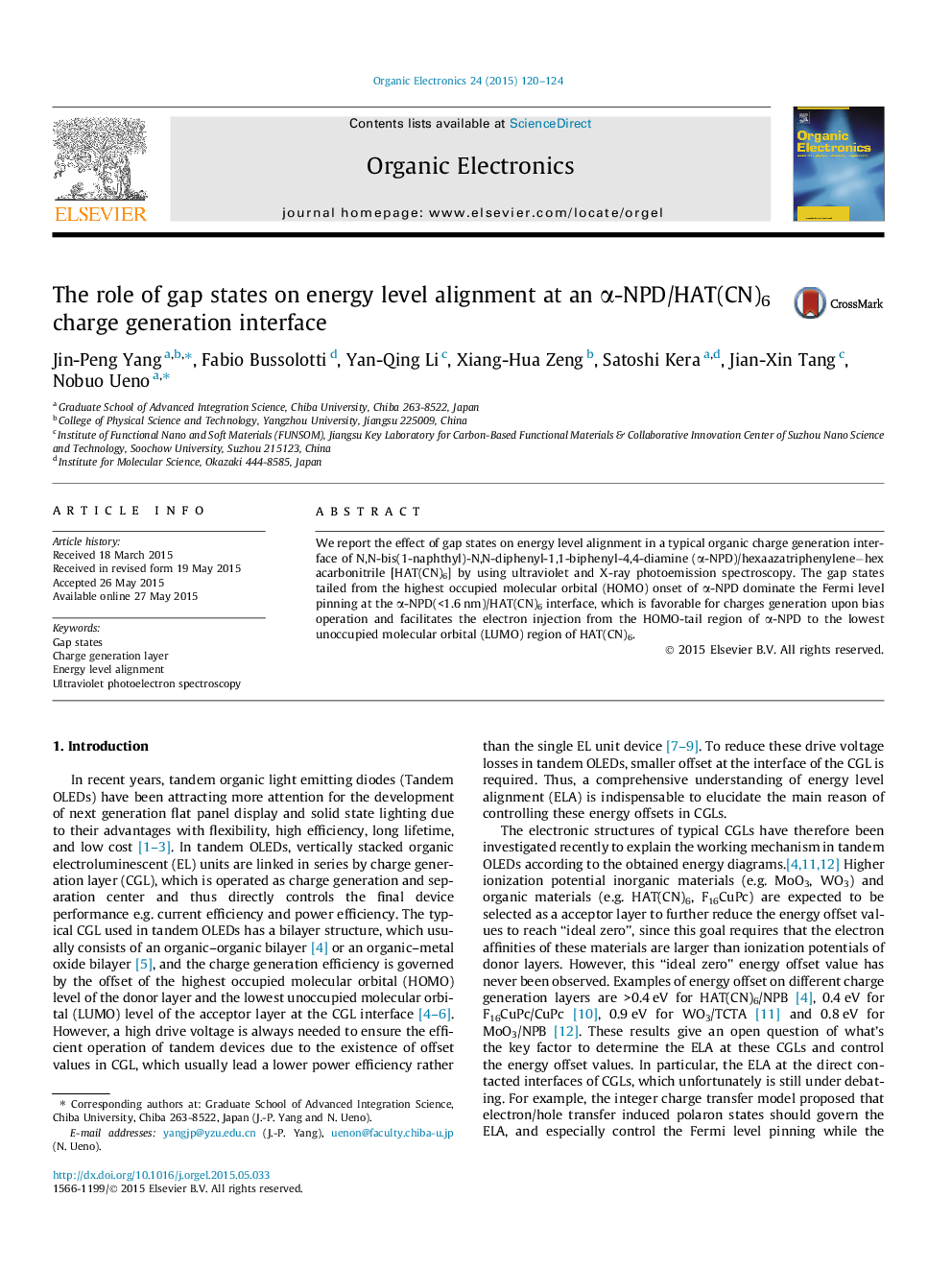| Article ID | Journal | Published Year | Pages | File Type |
|---|---|---|---|---|
| 1263685 | Organic Electronics | 2015 | 5 Pages |
•The electronic structure of HAT(CN)6/α-NPD charge generation layer has been demonstrated.•Energy offset between LUMO of HAT(CN)6 and HOMO of α-NPD is ∼0.4 eV.•The gap states tailed from the HOMO onset of α-NPD dominate the Fermi level pinning at the interface.
We report the effect of gap states on energy level alignment in a typical organic charge generation interface of N,N-bis(1-naphthyl)-N,N-diphenyl-1,1-biphenyl-4,4-diamine (α-NPD)/hexaazatriphenylene−hexacarbonitrile [HAT(CN)6] by using ultraviolet and X-ray photoemission spectroscopy. The gap states tailed from the highest occupied molecular orbital (HOMO) onset of α-NPD dominate the Fermi level pinning at the α-NPD(<1.6 nm)/HAT(CN)6 interface, which is favorable for charges generation upon bias operation and facilitates the electron injection from the HOMO-tail region of α-NPD to the lowest unoccupied molecular orbital (LUMO) region of HAT(CN)6.
Graphical abstractThe electronic structure of α-NPD/HAT(CN)6, which is a typical organic heterojunction used as charge generation layers (CGLs) in tandem organic light emitting diodes, has been studied to demonstrate that the existence of density-of-states above α-NPD HOMO position dominate the energy level alignment and control Fermi level pinning at the surface. The clear existence of gap states due to HOMO tailing in ultrathin α-NPD films explains the origin of energy level alignment in CGLs.Figure optionsDownload full-size imageDownload as PowerPoint slide
